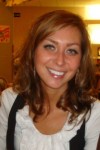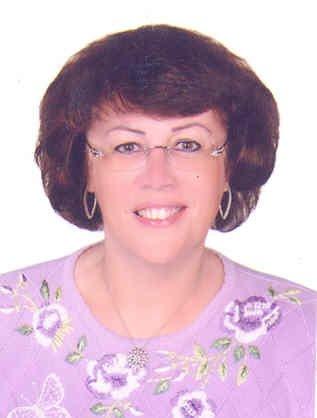Essential Strategies for Teaching Large Classes
by Brock Brady
 When does a class become large? It depends on the class. Writing classes become “large” quickly because of the need to give written feedback. A speaking/listening class can seem large, and the same size reading class can seem “small.” Young students make a class “larger” than older students because of shorter attention spans. If your classroom is very small and desks don’t move, a few students can become a large class. Diverse classes become “large” sooner than homogeneous classes. However, in a survey done in 2008 covering more than 30 countries, regardless of how many students the respondents typically taught (anywhere from 20 to 150), most felt that a class became large with about 30 students (Brady, 2011). When does a class become large? It depends on the class. Writing classes become “large” quickly because of the need to give written feedback. A speaking/listening class can seem large, and the same size reading class can seem “small.” Young students make a class “larger” than older students because of shorter attention spans. If your classroom is very small and desks don’t move, a few students can become a large class. Diverse classes become “large” sooner than homogeneous classes. However, in a survey done in 2008 covering more than 30 countries, regardless of how many students the respondents typically taught (anywhere from 20 to 150), most felt that a class became large with about 30 students (Brady, 2011).
Teachers don’t like large classes. But if you have a large class, you have a large class. You can struggle and complain (of course [grin] some people find complaining has a certain therapeutic value), or you can make the commitment to make your large class as effective as a “normal” class. When a class is large, you have to overbuild your classroom management structures. You can do almost everything in large classes that you do in smaller ones; you can make them as student centered as smaller classes, but you have to do it more explicitly and routinely.
Common Problems in Large Classes
- Classroom Management. When you talk to one group, another group is goofing off. Learning everyone’s name is hard. It’s difficult to get students to pay attention. Cheating can become a problem when you can’t be everywhere at once. In a large class, there’s more chance that making one student happy will make another student unhappy. Everything takes more time. Space and a sufficient amount of materials become classroom management problems: Teachers can’t monitor groups if there’s no space to walk around the room, and if you have 100 students, can you regularly make 100 copies?
- Assessment. Assignments and giving written feedback take much more time. Grading can be more complicated. With oral activities, it may be hard to know who is succeeding in a large class because it may be hard to know what mistakes are being made by whom.
- Differentiation. How do you keep good students occupied if they finish quickly? What about the struggling student who can’t keep up? You can’t spend extra time with that student when you have so many others to pay attention to. How can the student be allowed to participate according to her or his abilities?
Five Essential Strategies for Successful Large Classes
- Use structured groups consistently. To learn languages, practice is essential. In large classes, teachers have to create ways for students to practice without continuous, direct teacher monitoring—structured groups are the only way to accomplish this. Using groups allows students to be self-managing and allows more time for practice. Groups can be created in almost any class. Even when desks can’t be moved, having the front students turn back and the back students turn forward can make pairs and quads. Grouping strategies also occasionally allow better student support for struggling students when the teacher sees the need but lacks the time, because she can pair a stronger student with a struggling student as a provisional “stand in” for her own guidance.
- Routines rock. To do in large classes what you do in small classes, structures must be much more explicit and consistent. If the routines are the same every day, students need less specific guidance and can operate more independently. Classroom management problems can be solved with clear, consistent rules. Some common large class routines include having predictable sequences for every class; emphasizing the goal and steps of instruction at the beginning of every class; establishing patterns for how students move in and out of groups; and having fixed activities appropriate and engaging for each student if a group should finish its task early.
NOTE: Teachers may need to use local language in class more (at least initially) to make sure students are clear on all rules and instructions of classroom routines.
- Increase student responsibility. This leads to better learning and more class discipline. Because teachers do not have enough eyes to monitor every group of students, it is important to create routines in which students monitor themselves and students monitor (and support) each other. Assigning regular team leaders who liaise with the teacher, and assigning other team members ongoing roles in carrying out learning activities helps make everyone more accountable.
- Emphasize positive behaviors to improve classroom management. By making abundantly clear to students what good behaviors are, by praising students who practice good behaviors, and by asking students to describe or model good behaviors when questionable behavior occurs, you create a class focused on good behavior. In large classes, building habits of good behavior creates a culture that tends to reduce behavioral disruptions. Too often, students don’t know what good behavior is, or how important it is. Focusing on good behavior also reduces the resentment that comes when the teacher must address problem behavior.
- Peer and self-assessment are musts in large classes. Peer and self-assessment do not ask students to grade each other. They provide checklists to reinforce and implement practices that the teacher wants students to adopt. This way, when assignments arrive on the teacher’s desk, they have at least been reviewed twice and may have fewer errors to correct.
When approached in this mindful manner, large classes have the potential to become teachers’ most memorable classes. In requiring transparency (we have to be clear on rules, expectations and means of assessment), in showing respect (students will not take on added responsibility if they are not going to be appreciated for their effort), and in operating in trust, (students have to become the teacher’s eyes and ears and the students need to know that the teacher won’t suddenly change the rules), we create a state of balance between autonomy and collaboration where learning and community can flourish.
References
Brady, B. (2011). Managing assessment in large EFL classes, in C. Coombe et al., Issues in Assessment (pp. 291–299). Ann Arbor, MI: University of Michigan Press.
Resources
Fauzia, S., & Smith, R. (2010). Teaching English in large classes (TELC) project/network. Retrieved from http://www2.warwick.ac.uk/fac/soc/al/research/projects/telc/
–A useful collection of quite recent research on large EFL classes.
Hess, N. (2001). Teaching large multilevel classes. New York: Cambridge.
–A standard reference on large EFL classes, focusing primarily on large class activities.
Popham, W. J. (2008). Transformative assessment. Alexandria, VA: ASCD.
–An excellent overview of assessment techniques and strategies in U.S. K–12 classes.
Teaching and Educational Development Institute (2002-2006). Teaching large classes. Brisbane, AU: University of Queensland. Retrieved from http://www.tedi.uq.edu.au/LargeClasses.
–An extensive, well-managed, and up-to-date site for research and advice on teaching large classes.
_________________________
Brock Brady is a former TESOL president. As Peace Corps’ education specialist, Brady has developed, implemented, and is seeking certification for Peace Corps’ first-ever standardizing training curriculum. In the process, Brady has gained insights into ELT training in developing countries, including large classes, limited resources, blended pedagogies, and growing teacher communities of practice.
TC Monthly Giveaway Congratulations to Karen Green, of Austin, Texas, USA, for being the winner of the July 2013 TESOL Connections Monthly Giveaway. Karen won a free speaking book set.
This month, TESOL is giving away two free copies of our latest book:
Language Teaching Insights
From Other Fields:
Sports, Arts, Design, and More

One copy for you, and one for a friend or colleague!
Click here to enter
Drawing closes 29 August 2013, 11:59 pm EST
TESOL Blogs Interested in writing a blog for TESOL?
Contact Tomiko Breland with your idea or for details.
Check out the latest TESOL Blogs:
|
The Right Placement for ESL Writers, by Elena Shvidko
 In today’s entry, I would like to address the issue of the placement of international students in college composition classes. As we all know, institutions of higher education in the United States host a large number of international students drawn from a wide range of countries. This number is increasing each year. “Today universities are among the most diverse organizations in the world” (Harrison, 2012, p. 224). Along with the benefits that foreign learners obtain from pursuing their education in U.S. colleges, they also encounter challenges of linguistic, educational, financial, social, cultural, and psychological origins. Read More. In today’s entry, I would like to address the issue of the placement of international students in college composition classes. As we all know, institutions of higher education in the United States host a large number of international students drawn from a wide range of countries. This number is increasing each year. “Today universities are among the most diverse organizations in the world” (Harrison, 2012, p. 224). Along with the benefits that foreign learners obtain from pursuing their education in U.S. colleges, they also encounter challenges of linguistic, educational, financial, social, cultural, and psychological origins. Read More.
|
|
Bridging the Gap Between Research and Classroom Practice, by Deena Boraie, TESOL President
 In an interesting article in the Guardian Weekly of October 16, 2012 (“How Useful is TESOL Academic Research?“), Penny Ur asks an important question about TESOL academic research for classroom teachers. She acknowledges the gap between classroom practice and research, stating that the source of professional learning for most teachers is from their classroom experience and interaction with students as well as discussions with their colleagues. Teachers are busy people and have little time to read research. She notes that a lot of the research focuses on language acquisition and rarely deals with pedagogical issues such as effectiveness of different types of exercises or classroom management. Read More. In an interesting article in the Guardian Weekly of October 16, 2012 (“How Useful is TESOL Academic Research?“), Penny Ur asks an important question about TESOL academic research for classroom teachers. She acknowledges the gap between classroom practice and research, stating that the source of professional learning for most teachers is from their classroom experience and interaction with students as well as discussions with their colleagues. Teachers are busy people and have little time to read research. She notes that a lot of the research focuses on language acquisition and rarely deals with pedagogical issues such as effectiveness of different types of exercises or classroom management. Read More.
|
|
Google+ Education: Part 2, by Tara Arntsen
 Back when I talked about participatory cultures in a post entitled Moving Education Online, I mentioned Google Sites as a resource for teachers. Google Sites is great because you can easily make a class website using the template called Classroom site. While building a website from scratch is intimidating for many, creating a website from this Google Sites template is not hard as there are directions for customizing the various sections. Some sections included in the template are homework assignments, contact me, class announcements, reading list, class photos, and word of the week. If you don’t need a section, just delete it! It’s that simple. Read More. Back when I talked about participatory cultures in a post entitled Moving Education Online, I mentioned Google Sites as a resource for teachers. Google Sites is great because you can easily make a class website using the template called Classroom site. While building a website from scratch is intimidating for many, creating a website from this Google Sites template is not hard as there are directions for customizing the various sections. Some sections included in the template are homework assignments, contact me, class announcements, reading list, class photos, and word of the week. If you don’t need a section, just delete it! It’s that simple. Read More.
|
TESOL Bookstore 
 Treat Yourself to a Book Full of Surprises! Treat Yourself to a Book Full of Surprises!
Language Teaching Insights
From Other Fields:
Sports, Arts, Design, and More
This book is a fun read and full of practical tips from language teachers who bring their insights to the classroom from extensive experience in other fields.
How would a restaurant reviewer critique an essay? How would a martial arts master facilitate language practice? How would a bartender create a supportive environment for learning? And how would a social activist promote critical thinking in the classroom? Answers to these questions and more translate into new ways of thinking about teaching and the classroom.
"The authors provide much, much more than the “insights” promised in the title. Each chapter is fascinating, inspiring, refreshing, and intellectually stimulating. I would select it for an ESOL methods course. Buy this book!" (John F. Fanselow, Professor Emeritus, Columbia University Teachers College)
|
 |
|
|
 |
| Visiting Lecturer of Linguistics and English, Ohio University, Athens, Ohio, USA
EFL Teachers (Immediate Hire), Edwin Consulting, Riyadh, Saudi Arabia
Fellowships Available Worldwide, English Language Fellow Program, Worldwide
CEA Junior Accreditation Associate, Commission on English Language Program Accreditation (CEA), Alexandria, Virginia, USA
English (ESL) & Math Teachers, World Jobs, Inc, Saudi Arabia
Want to post your open positions to Job Link? Click here.
To browse all of TESOL's job postings, check out the TESOL Career Center. |
 |
|
 |
| ADVERTISEMENT |

|
 |
|